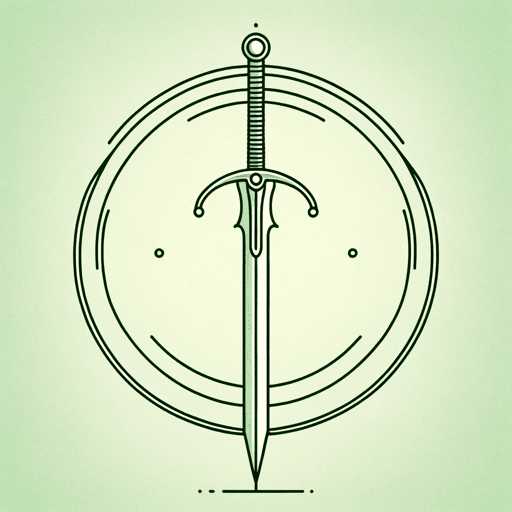30 pages • 1 hour read
Lewis CarrollJabberwocky
Fiction | Poem | Middle Grade | Published in 1871A modern alternative to SparkNotes and CliffsNotes, SuperSummary offers high-quality Study Guides with detailed chapter summaries and analysis of major themes, characters, and more.
Summary and Study Guide
Overview
“Jabberwocky,” written by Charles Lutwidge Dodgson under the pseudonym Lewis Carroll, is widely considered the most famous Nonsense poem in the English language, as well as one of the most famous, if not the most famous, poems to emerge from the Victorian era.
Carroll wrote the first verse in 1855 at the age of 23 while staying with his cousins at their family home of Whitby. Titled “Stanza of Anglo-Saxon Verse,” it was published as his contribution to the family comic magazine Mischmasch, along with a list of definitions meant to clarify or translate its made-up words. He later completed the remaining five stanzas by 1867, and the poem known as “Jabberwocky” was published complete as a part of the first chapter of Through the Looking Glass, and What Alice Found There in 1871.
Since that time, “Jabberwocky” has become Lewis Carroll’s best-known and most discussed poem. It was, in a sense, adopted by Dadaists and Surrealists as an inspirational text of sorts. And it has been defended and promoted over the years by leading literary figures including T. S. Eliot, Virginia Woolf, James Joyce, and W. H. Auden. It has been filmed many times, translated into 65 languages, and gone on to become a favorite of readers of poetry both young and old, as well as a source of interest, inquiry, and inspiration for all kinds of people, including English professors, computer programmers, researchers in the fields of linguistics, visual artists, philosophers, logicians, mathematicians, physicists, psychologists, folklorists, politicians, literary critics, creators of children’s programming, and poets.
Poet Biography
Charles Lutwidge Dodgson, who wrote under the pseudonym Lewis Carroll, was born as the third of 11 children, in Daresbury, Cheshire, near Warrington on January 27, 1832, into an educated, middle class, conservative, Anglican family whose men served primarily as army officers and Church of England clergy. When he was 11 years old, his father, who was a vicar, was assigned to the parish of Croft-on-Tees in the North Riding of Yorkshire. The family moved there, and it was to be their home for the next 25 years.
Described as articulate and bright, young Dodgson was educated at home until 1845, at which time he entered the prestigious Rubgy School, where by all accounts he excelled with ease and was considered one of the most promising students of his class, despite his being (as he was later to admit) miserable. Most speculate that he must have suffered persistent abuse at the hands of the older boys.
In May 1850 he entered the University of Oxford and became a member of his father’s college, Christ Church, where as a student he showed himself to be both gifted and easily distracted. For example, in 1852 he won first-class honors in Mathematics Moderations and in 1854 he won first-class honors in the Final Honors School of Mathematics and graduated with a Bachelor of Arts. In 1855, however, he lost an important scholarship due to lack of study. Nevertheless, he was given a Christ Church Mathematical Lectureship, which he held for the next 26 years. He was to remain at Christ Church, serving in various other posts until his death on January 14, 1898.
It was while working at Christ Church College as a mathematician that he wrote what were to become his best-known works of children’s fiction, namely, Alice in Wonderland (1865), Through the Looking Glass, and What Alice Found There (1871), and The Hunting of the Snark (1876). Other publications of his during this time include Phantasmagoria and other poems (1869), Rhyme and Reason (1883), and Sylvie and Bruno (1889), as well as various treatises and books on mathematics.
Poem Text
“Beware the Jabberwock, my son!
The jaws that bite, the claws that catch!
Beware the Jubjub bird, and shun
The frumious Bandersnatch!”
He took his vorpal sword in hand;
Long time the manxome foe he sought—
So rested he by the Tumtum tree
And stood awhile in thought.
And, as in uffish thought he stood,
The Jabberwock, with eyes of flame,
Came whiffling through the tulgey wood,
And burbled as it came!
One, two! One, two! And through and through
The vorpal blade went snicker-snack!
He left it dead, and with its head
He went galumphing back.
“And hast thou slain the Jabberwock?
Come to my arms, my beamish boy!
O frabjous day! Callooh! Callay!”
He chortled in his joy.
‘Twas brillig, and the slithy toves
Did gyre and gimble in the wabe:
All mimsy were the borogoves,
And the mome raths outgrabe.
Carroll, Lewis. “Jabberwocky.” 1871. Poetry Foundation.
Summary
The poem opens with the speaker delivering a most peculiar first stanza, fraught as it is with neologisms, portmanteau words, and a suggestion of archaic syntax. Despite its linguistic complexity or nonsense (depending on your point of view), the first stanza provides the setting. The “toves” are in a state of motion, and the “borogoves” and “raths” are in an expressive mood, making physically manifest their respective emotional states. It is sometime during daylight hours. Nature, as manifest in these various creatures, is in motion, at play.
Stanza 2 initiates the narrative. The speaker assumes the voice of the son’s father and gives the son parting advice. The nature of the advice, the repeated admonishment to “beware” dangerous creatures, implies that the son is about to depart on a dangerous journey. It is also the first time the reader is presented with the presumed villain of the piece, the Jabberwock, in Line 5.
The journey begins in earnest with Line 9, Stanza 3, when the son takes “his vorpal sword in hand.” Line 10 tells us that he looks for the Jabberwock for a long time, before stopping to rest “by the Tumtum tree” and think over his current situation.
The Jabberwock makes itself known in Stanza 4, “whiffling” and “burbling” through “the tulgey wood” “with eyes of flame,” only to be immediately attacked, in the first line of the fifth stanza, by the son.
By the end of the fifth stanza, the fight is over, the son has decapitated the Jabberwock. He “galumphed” home to the praise of his father, who, in Stanza 6, immediately asks, “And hast thou slain the Jabberwock?"
The joy felt at the son’s victorious return is, however, immediately undercut by the refrain of the first stanza as stanza seven, leaving the reader to wonder whether anything has been achieved by the son’s journey and the slaying of the Jabberwock.








Related Titles
By Lewis Carroll
Featured Collections
Good & Evil
View Collection
Mythology
View Collection
Poems of Conflict
View Collection
Poetry: Mythology & Folklore
View Collection
Poetry: Perseverance
View Collection
Required Reading Lists
View Collection
Safety & Danger
View Collection
Short Poems
View Collection
Valentine's Day Reads: The Theme of Love
View Collection



